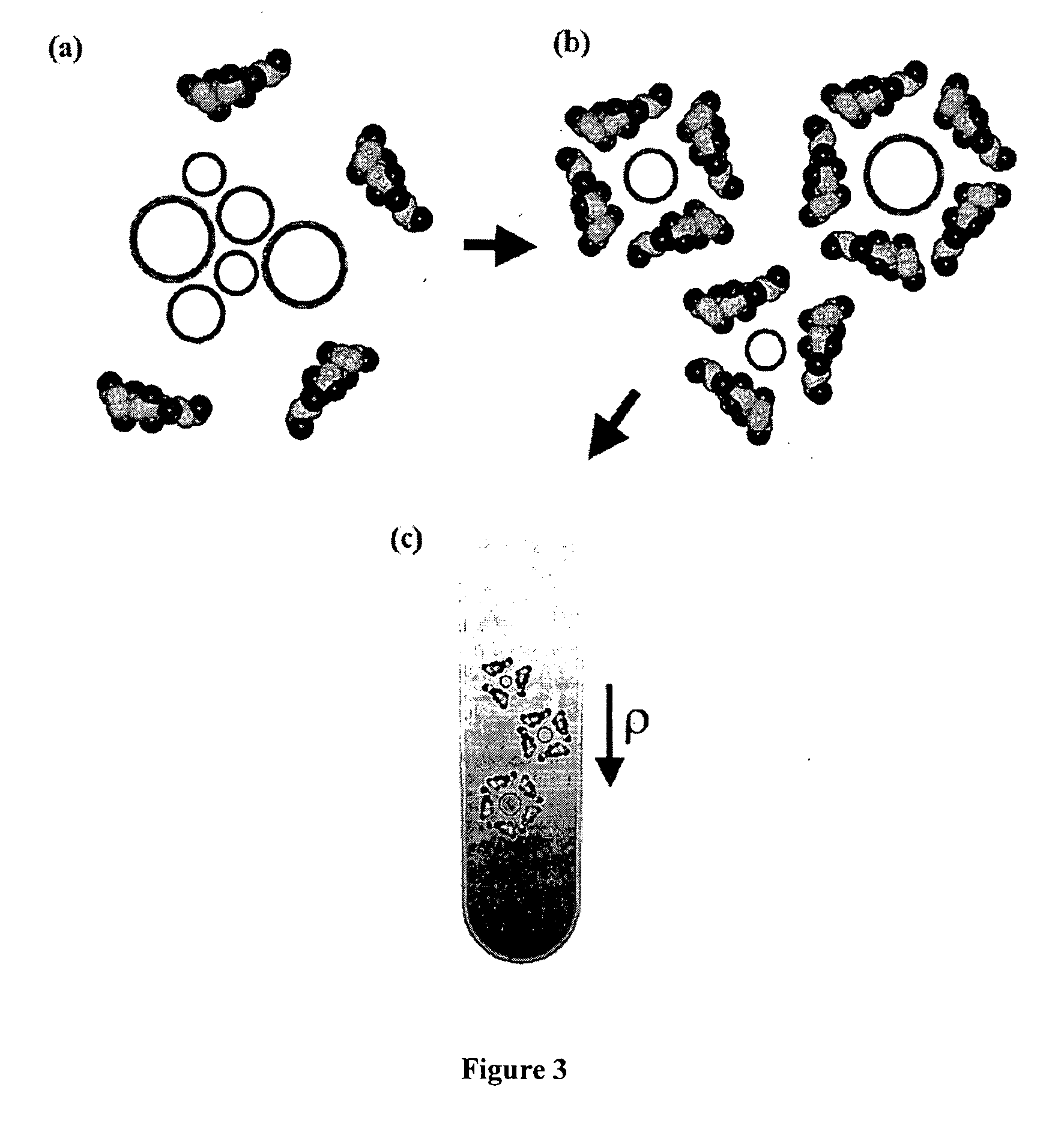Monodisperse single-walled carbon nanotube populations and related methods for providing same
a single-walled carbon nanotube, monodisperse technology, applied in the direction of chemical/physical/physical-chemical processes, chemical/physical/physical-chemical processes, and energy-based chemical/physical/physical-chemical processes, can solve the problem of swnts that cannot be used in high-performance field-effect transistors, unavoidable structural heterogeneity of the currently available as-synthesized swnts, and the inability to achieve the same
- Summary
- Abstract
- Description
- Claims
- Application Information
AI Technical Summary
Benefits of technology
Problems solved by technology
Method used
Image
Examples
example 1
Separation of SWNTs Using Different Single-Surfactant Systems
Raw SWNT Material
[0095]SWNTs of various diameters were explored by utilizing SWNTs produced by the CoMoCAT method (which yields tubes about 7-11 Å in diameter), and the laser-ablation growth method (which yields tubes about 11-16 Å in diameter). CoMoCAT material was purchased from Southwest Nanotechnologies, Inc. (Norman, Okla.) as raw material purified only to remove silica. The laser-ablation grown SWNTs were manufactured by Carbon Nanotechnologies Inc. (Houston, Tex.) and received in their raw form.
Surfactant Encapsulation
[0096]To disperse SWNTs in solutions of bile salts or other surfactants, 1 mg / mL SWNTs were dispersed in solutions of 2% w / v surfactant via ultrasonication. Sodium dodecyl sulfate, electrophoresis grade, minimum 99%, was purchased from Fisher Scientific. Dodecylbenzene sulfonic acid, sodium salt, an 80% (CH) mixture of homologous alkyl benzenesulfonates; sodium cholate hydrate, minimum 99%; deoxycholic...
example 2
Multiple Cycles of Density Gradient Ultracentrifugation
[0133]The degree of isolation achieved after a single step of the technique is limited by the diffusion of SWNTs during ultracentrifugation, mixing during fractionation, and statistical fluctuations in surfactant encapsulation. To overcome these limitations and improve the sorting process, the centrifugation process can be repeated for multiple cycles. For example, after the first iteration of density gradient centrifugation, subsequent fractionation, and analysis of the optical absorbance spectra of the collected fractions, the fractions containing the largest concentration of the target chirality or electronic type of interest can be combined. The density and volume of the combined fractions can then be adjusted by the addition of iodixanol and water, both containing surfactant / encapsulation agent (usually at 2% w / v surfactant). This sorted sample can then be inserted into a second density gradient, centrifuged, and the entire...
example 3
Adjustment of pH and Addition of Co-Surfactants
[0147]While the purification of SWNTs can be significantly enhanced via multiple cycles of ultracentrifugation as demonstrated in Example 2 above, further improvements can be realized by optimizing the effectiveness of a single cycle through tuning of the structure-density relationship for SWNTs. For example, by adjusting the pH or by adding competing co-surfactants to a gradient, the purification of a specific diameter range or electronic type can be targeted. In this example, improvements in isolating SWNTs of specific, targeted diameters and electronic types were demonstrated by separating SC-encapsulated CoMo-CAT-grown SWNTs at pH 7.4 versus at pH 8.5, and using a co-surfactant system (1:4 SDS:SC (by weight) and 3:2 SDS:SC (by weight)) to separate CoMoCAT-grown and laser ablation-synthesized SWNTs. Co-surfactant systems having other ratios also can be used. For example, the ratio (by weight) of an anionic alkyl amphiphile (e.g., SDS...
PUM
| Property | Measurement | Unit |
|---|---|---|
| optical band gaps | aaaaa | aaaaa |
| path length | aaaaa | aaaaa |
| excitation wavelength | aaaaa | aaaaa |
Abstract
Description
Claims
Application Information
 Login to View More
Login to View More - R&D
- Intellectual Property
- Life Sciences
- Materials
- Tech Scout
- Unparalleled Data Quality
- Higher Quality Content
- 60% Fewer Hallucinations
Browse by: Latest US Patents, China's latest patents, Technical Efficacy Thesaurus, Application Domain, Technology Topic, Popular Technical Reports.
© 2025 PatSnap. All rights reserved.Legal|Privacy policy|Modern Slavery Act Transparency Statement|Sitemap|About US| Contact US: help@patsnap.com



